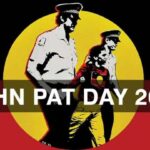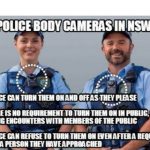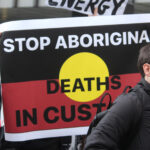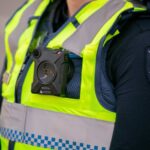Police Criticised for False Reports and Withholding Evidence Over Indigenous Death
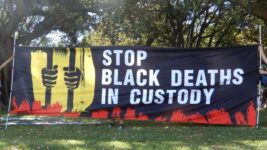
Remains of the body of Indigenous man Gordon Copeland have been found just metres from where he disappeared three months ago.
The young man went missing in July 2021, after he was last seen allegedly running from police.
At the time of his disappearance, police and emergency services including the Rural Fire Service and the SES failed to locate Mr Copeland. A further search involving police divers and additional volunteers was also unsuccessful.
Since then, the local community and the young man’s family have kept sustained pressure on authorities to find him. NSW Police launched a search last week after a request by the NSW Coroner.
Mr Copeland’s remains were found three days later in the Gwydir River, about 500 metres from where he was last seen.
Critical Incident Investigation
In a statement released just days after the Gomeroi man disappeared, police said they had seen a black hatchback speeding through Moree at about 2.30am on 10 July 2021 and later found the car bogged near a bridge on the Carnarvon Highway.
“Officers attempted to speak with a man at the scene, however he allegedly ran from police and was seen entering the Gwydir River”, the statement said.
Mr Copeland’s family disputes this version of events, saying officers had chased the car and that they believe the 22-year-old, who was terrified of the police, dived into the water to get away.
Police refuse to release body camera footage
The family has criticised police over their false reports as well as for withholding information, and police have repeatedly refused their repeated requests to release the footage recorded on police body cameras.
The rules regarding police body cameras have been heavily criticised since the devices were introduced after a pilot program in 2015.
Unlike in many parts of the United States, police officers in New South Wales are permitted to turn the cameras on and off as they please and there is no legal requirement for them to release the footage to those they encounter.
Police investigating police
The events leading up to Mr Copeland’s disappearance are currently the subject of an internal police investigation.
A critical incident investigation is protocol if someone dies or disappears during a police operation.
The investigation will be overseen by the professional standards command, which is an internal division of NSW Police.
Targeting racial minorities
Systemic racism in the justice system is well documented, right across the nation.
Earlier this year at the Coronial Inquest into the deaths of two Western Australian indigenous teenagers who drowned while trying to flee police, Indigenous psychologist Professor Patricia Dudgeon heavily criticised police for targeting Indigenous people in the community.
Professor Patricia Dudgeon told the Inquest she believed the teens’ deaths could have been avoided if the recommendations of a 2017 report by the Law Reform Commission, Pathways to Justice – An Inquiry into the Incarceration Rate of Aboriginal and Torres Strait Islander Peoples, had been implemented.
Federal Government Pathways to Justice report ignored
The report, commissioned by the federal government, aimed to reduce the disproportionate rate of Indigenous incarceration and improve community safety.
But it, along with the 1991 Report from the Royal Commission into Indigenous Deaths in Custody appears to be long forgotten. No action has been taken since the Pathways to Justice report was tabled in Parliament more than three years ago.
Earlier this year, the Law Council of Australia again tried to pressure the Federal Government into taking the lead on responding to the report. However, this request, like several others that had come before it, has fallen on deaf ears within the Morrison Government, just as so many other social issues have, overshadowed by the pandemic.
Since the Royal Commission into Indigenous Deaths in Custody 30 years ago, a further 475 Indigenous people have died at the hands of police, or while in police custody.
And often their stories — of the violence or mistreatment they experienced at the hands of police officers — are heartbreaking. There are many other cases too, where there were underlying health issues officers failed to detect or act upon, which led to deaths that might have otherwise been preventable.
In recent years there have been several studies into the high incarceration rates. Aboriginal and Torres Strait Islander people are the most incarcerated people in the world. Despite making up 2.8 percent of the overall population in Australia, First Nations people account for close to 28 percent of the adult prisoner population.
The NSW Police Force has also been found to be doubling down on its use of strip-searches, and carrying out this invasive practice upon Aboriginal children as young as 11 years old.
Then of course, the “trauma that flows back into Aboriginal communities as a result of these deaths, continues to perpetuate the ever-deepening divide between Indigenous Australians and police officers.
Police are now also preparing a report for the Coroner who will investigate the death of Gordon Copeland, and deliver findings in due course.


